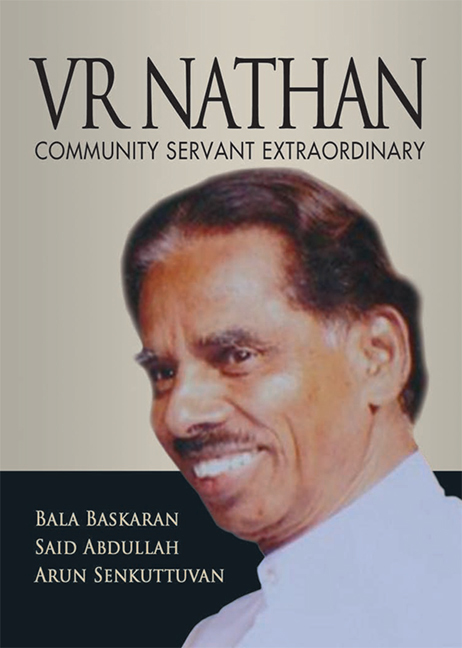Book contents
- Frontmatter
- Contents
- Foreword
- Message
- Preface
- Acknowledgements
- 1 VR's Inter-religious Leadership
- 2 An Immigrant who Made Good
- 3 Introduction to Temple Management Affairs
- 4 Invitation to Help out HEB
- 5 An Era of Change in HEB
- 6 VR's Signal Contribution to HEB's Transformation
- 7 Celebrating Hindu Festivals
- 8 Transforming the Temple Scene
- 9 VR's Views in Public Deliberations of Issues Affecting Indians
- 10 VR's Legacy
- Appendix
- About the Authors
- Plate section
8 - Transforming the Temple Scene
Published online by Cambridge University Press: 21 October 2015
- Frontmatter
- Contents
- Foreword
- Message
- Preface
- Acknowledgements
- 1 VR's Inter-religious Leadership
- 2 An Immigrant who Made Good
- 3 Introduction to Temple Management Affairs
- 4 Invitation to Help out HEB
- 5 An Era of Change in HEB
- 6 VR's Signal Contribution to HEB's Transformation
- 7 Celebrating Hindu Festivals
- 8 Transforming the Temple Scene
- 9 VR's Views in Public Deliberations of Issues Affecting Indians
- 10 VR's Legacy
- Appendix
- About the Authors
- Plate section
Summary
The most important relocation of a temple that VR had to supervise had to be undertaken a little prematurely, before HEB built up its cash reserves. Sivan Temple's Orchard Road premises had been acquired by the government in 1983, to build the Dhoby Ghaut MRT Station. Chairman of HEB then, P Selvadurai MP, had accepted the compensation the government had offered without appealing for a higher amount or securing an alternative site to relocate the temple. The temple had no reserves as any surpluses hitherto had been accruing to its chief priest.
HEB decided to relocate the god-forms in the temple at the vacant part of the land next to Perumal Temple while it tried to get an alternative site. Newly-elected MP Chandra Das got involved. He felt that the god-forms should not be moved out of Orchard Road until a new site had been secured. He believed such an approach might persuade the government to allot a site quickly. All he could accomplish was to get some Urban Redevelopment Authority funding to construct a temporary structure next to Perumal Temple. Selvadurai had approached the government for a site in Geylang. Some devotees wanted the new Sivan Temple to be erected at the site of the former Tekka Market which was then being used as a car park. Chandra Das supported the choice of Geylang for two reasons: temples had to tender for any new site. He was trying to persuade the government to allot a piece of land without tender as there was no way the temple could afford to raise enough funds to compete in a commercial tender. He rightly guessed the chances of securing a plot without tender were much better in Geylang than in Tekka. Secondly, North Indians by then were big donors at the Sivan Temple. The bulk of North Indians in Singapore lived on the east coast. They would support the building of the temple in Geylang more enthusiastically than they would a new temple in Tekka area where the North Indians already had a temple.
Chandra Das said: “There was a hell of a hue and cry. Why Geylang, a Malay area? I said: Where is Mariamman Temple now? At the heart of China Town.” SR who had by then assumed chairmanship of HAB supported him.
- Type
- Chapter
- Information
- VR NathanCommunity Servant Extraordinary, pp. 84 - 111Publisher: ISEAS–Yusof Ishak InstitutePrint publication year: 2012



